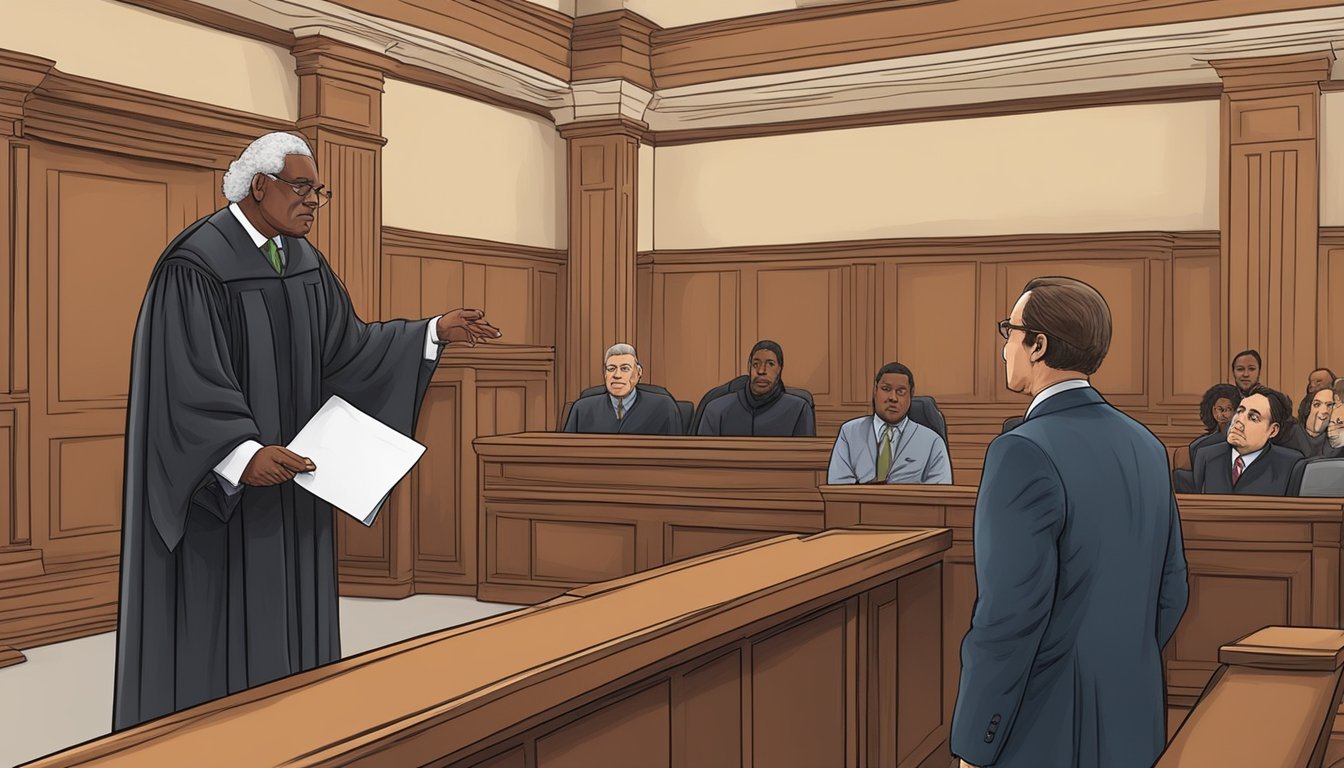The Clairemont Nightmare: Cleophus Prince Jr.'s Reign of Terror
A Serial Killer's Deadly Spree in San Diego
In 1990, the quiet neighborhoods of Clairemont and University City in San Diego, California, were gripped by fear as a series of brutal murders unfolded. The perpetrator, later identified as Cleophus Prince Jr., became known as the Clairemont Killer. Prince was convicted of raping and murdering six women between January and September 1990, leaving a trail of terror in his wake.
Born on July 24, 1967, Prince grew up as an average student with an interest in sports. However, his seemingly ordinary background belied the violent tendencies that would later emerge. The killings were characterized by frenzied stabbings, particularly targeting the victims' breasts, which became a signature element of the crimes.
The case gained significant attention due to Prince's status as an African American serial killer targeting white victims. His arrest in 1991 brought relief to the San Diego communities that had lived in fear for months. In 1993, Prince was sentenced to death for his crimes, marking the end of a dark chapter in San Diego's history.
Who Was Cleophus Prince Jr.?
Cleophus Prince Jr. was an American serial killer who committed a series of brutal murders in San Diego, California in 1990. His crimes shocked the community and earned him the moniker "The Clairemont Killer."
Early Life and Background
Cleophus Prince Jr. was born on July 24, 1967. He had a relatively unremarkable upbringing, performing as an average student in school. Prince showed an interest in sports during his youth.
After completing high school, he joined the U.S. Navy in 1987. He was stationed at Miramar Naval Air Station in San Diego. Prince's military career was short-lived and marred by misconduct.
He faced disciplinary action for stealing a postal money order. This incident resulted in:
Nearly a month in the brig
A $466 fine
Eventual discharge in October 1989
The Transition to Violence
Prince's criminal activities escalated dramatically after his discharge from the Navy. Between January and September 1990, he embarked on a terrifying spree of violence in San Diego County.
His targets were primarily white women. Prince's crimes were characterized by:
Brutal stabbings, often targeting the victims' breasts
Attacks occurring in the Clairemont area of San Diego
A total of six confirmed murders
The first known victim was 21-year-old Tiffany Schultz, killed on January 12, 1990. Prince's actions instilled fear in the community, particularly among female residents.
Timeline of Terror
Cleophus Prince Jr.'s crimes in San Diego County followed a chilling pattern over several months in 1990. His attacks targeted lone women in their homes, escalating in violence and frequency.
The First Attacks
On January 12, 1990, Prince claimed his first victim, Tiffany Schultz. The 21-year-old was stabbed to death in her Canyon Ridge apartment. A month later, on February 16, Janene Weinhold became the second victim. The 24-year-old UCSD student was killed in her Buena Vista Gardens apartment.
These initial attacks set the stage for Prince's brutal spree. Both women were stabbed multiple times, with particular focus on their chests.
The Pattern of Murders
Prince's crimes escalated rapidly. On April 3, he murdered Holly Tarr, 18, visiting from Michigan. On May 9, Elissa Keller, 38, fell victim in her Buena Vista apartment.
June saw two more murders:
Pamela Clark, 42, killed on June 6
Amber Clark, 18, murdered on June 29
Prince consistently targeted white women, entering their homes during daylight hours. His signature was frenzied stabbing, particularly to the victims' breasts.
The End of the Killing Spree
The final known murder occurred on September 13, 1990. Dorothy Blood, 39, was killed in her Clairemont home. This attack marked the end of Prince's nine-month reign of terror.
Law enforcement intensified their efforts, leading to Prince's arrest on February 4, 1991. He was caught attempting to use a stolen credit card. DNA evidence and other forensic clues linked him to the murders.
Prince's capture brought relief to San Diego County residents, especially in the Clairemont area where most attacks occurred. The community could finally begin to heal from the trauma of six brutal murders.
The Victims
Cleophus Prince Jr.'s brutal crimes claimed the lives of six women in San Diego County. His victims were young, white females targeted in their homes or while exercising.
Profiles and Lives Lost
Tiffany Schultz, 20, was the first victim, murdered on January 12, 1990, in her Canyon Ridge apartment. Janene Weinhold, 21, was killed on February 16 in her Buena Vista Gardens home. Holly Tarr, 18, lost her life on April 3 while visiting her brother. Elissa Keller, 38, was slain on May 21 in her Clairemont apartment. Pamela Clark, 42, died on September 13 at her home. The final victim, Carol Casio, 47, was murdered on September 28 while jogging in Balboa Park.
Targeting White Women
Prince specifically chose white women as his victims. He often stalked them at gyms or followed them home. His modus operandi involved breaking into their residences or attacking them in isolated areas. Prince's crimes were characterized by frenzied stabbings, particularly targeting the victims' breasts. This signature became a crucial element in his eventual conviction. The racial aspect of his victim selection added a disturbing dimension to his crimes, highlighting the complex interplay of race and violence in his attacks.
Investigation Breakthrough
The hunt for the Clairemont killer intensified as police gathered crucial evidence and zeroed in on a suspect. Meticulous detective work and forensic analysis played key roles in cracking the case.
Collecting Evidence
Investigators combed crime scenes for clues, collecting blood samples, fingerprints, and other physical evidence. DNA analysis proved vital, as the killer left traces at multiple murder sites. Police also gathered surveillance footage and eyewitness accounts from nearby locations.
Detectives noticed a pattern in the killer's methods and victim selection. This helped them narrow down potential suspects and areas to focus their search. The task force grew as the case gained more attention and resources.
The Arrest of Cleophus Prince Jr.
On September 27, 1990, police arrested Cleophus Prince Jr. at his girlfriend's apartment. A search of his residence uncovered damning evidence linking him to the murders. Items belonging to victims were found in his possession.
Prince's arrest came after a neighbor recognized him from a police sketch. DNA evidence from crime scenes matched samples taken from Prince. Fingerprints found at murder sites also proved to be his.
Investigators built a strong case against Prince, connecting him to six murders and numerous burglaries. His arrest brought relief to the terrified San Diego community after months of fear and uncertainty.
Legal Proceedings and Conviction
Cleophus Prince Jr. faced trial for his brutal crimes in San Diego. The court proceedings led to his conviction and death sentence, bringing a measure of closure to the victims' families.
The Trial
The trial of Cleophus Prince Jr. began in 1993. Prosecutors presented compelling evidence, including DNA matching and witness testimonies. Prince faced charges for six counts of first-degree murder, five counts of burglary, and one count of rape. The jury deliberated for 10 days before reaching their verdict. On July 15, 1993, they found Prince guilty on all counts.
Justice for Victims
Following the conviction, the penalty phase of the trial commenced. The court allowed the use of video evidence to showcase victim impact statements. This decision was later upheld by higher courts. On August 5, 1993, the jury recommended the death penalty for Prince. The judge formally sentenced him to death in the gas chamber. Prince's conviction provided relief to the Clairemont and University City communities, ending the reign of terror by the so-called "Clairemont Killer".
The Aftermath
Cleophus Prince Jr.'s crimes left a lasting impact on San Diego and garnered significant media attention. The community grappled with fear and loss, while the case became the subject of various books and documentaries.
Impact on San Diego Community
The Clairemont killings shook San Diego to its core. Residents, especially women, lived in constant fear during Prince's active period. Many invested in security systems and changed their daily routines. Local gyms saw a decline in female membership as Prince had targeted some victims there.
The victims' families suffered immense grief and trauma. Support groups formed to help those affected cope with their loss. The San Diego Police Department faced criticism for the time it took to apprehend Prince, leading to reforms in investigative procedures.
Community watch programs expanded, and neighborhoods became more vigilant. The case also sparked discussions about safety in apartment complexes, prompting some to enhance security measures.
In Media and Literature
Prince's crimes attracted widespread media coverage. News outlets extensively reported on the investigations, trial, and aftermath. The case was featured on true crime television shows, bringing national attention to the Clairemont killings.
Several books delved into Prince's crimes and background. These works explored his motives, the investigation process, and the impact on victims' families. Notable publications included detailed accounts of the case and its resolution.
Documentaries examined the serial killer's psychology and the challenges faced by law enforcement in capturing him. These productions often featured interviews with investigators, survivors, and family members of the victims.
The case also inspired crime fiction writers, who incorporated elements of Prince's modus operandi into their novels. This further cemented the Clairemont killings in popular culture.
Understanding Serial Killers
Serial killers are complex individuals who engage in repeated acts of murder. Their motivations and methods vary, but certain patterns emerge when studying their psychology and behavior.
Psychology and Behavior
Serial killers often exhibit antisocial personality disorder and lack empathy. They may have experienced trauma or abuse in childhood, contributing to their violent tendencies. Some are driven by a desire for power and control over their victims.
Many serial killers, like Cleophus Prince Jr., display a fascination with violence from an early age. They might engage in animal cruelty or arson before escalating to human targets. Their crimes frequently have a sexual component, as seen in Prince's rape and murder cases.
Patterns and Profiles
Law enforcement agencies use behavioral profiling to understand and catch serial killers. Common patterns include:
Specific victim types (e.g., young women in Prince's case)
Consistent murder methods (Prince used knives)
Trophies taken from crime scenes
Escalating frequency of killings
Serial killers often have a "cooling off" period between murders. However, some, like Prince, may commit crimes in rapid succession. Their profiles can vary from seemingly ordinary individuals to those with obvious antisocial traits.
Forensic analysis of crime scenes provides crucial insights into a killer's modus operandi and potential motivations. This information helps investigators link multiple murders to a single perpetrator.
Remembering the Victims
The Clairemont killings left a devastating impact on the San Diego community. Six women lost their lives to senseless violence, leaving behind grieving families and a shaken neighborhood.
Honoring Lives Cut Short
Tiffany Schultz, 20, was the first victim, murdered on January 12, 1990. Janene Weinhold, 21, was killed on February 16. Holly Tarr, 18, lost her life on April 3. Elissa Keller, 38, was murdered on May 21. Pamela Clark, 42, was killed on September 13. The final victim, Carol Defeo, 37, was murdered on September 28.
These women were more than statistics. They were daughters, sisters, friends, and community members with hopes and dreams. Local memorials and vigils honored their memories and brought the community together in mourning.
Learning from Tragedy
The Clairemont killings highlighted the importance of personal safety and community vigilance. Neighborhood watch programs expanded, and residents became more security-conscious. Law enforcement improved communication with the public about ongoing investigations.
Self-defense classes saw increased enrollment, especially among women. The tragedy sparked discussions about violent crime prevention and victim support services. It also led to calls for justice system reforms to better protect potential victims and prosecute violent offenders.
The community's response demonstrated resilience in the face of fear, as residents worked together to reclaim their sense of safety and honor those lost.
Safety and Prevention
The Clairemont killings prompted heightened awareness of personal safety and community vigilance. Law enforcement agencies and residents implemented various measures to prevent future attacks and protect vulnerable individuals.
Law Enforcement and Community Efforts
Police departments increased patrols in residential areas, particularly around apartment complexes. They established neighborhood watch programs and conducted safety seminars for residents. Community leaders organized self-defense classes and distributed personal safety devices like pepper spray and alarms.
Local businesses improved security measures, including better lighting in parking lots and walkways. Some apartment complexes installed security cameras and hired additional security personnel. Schools and universities implemented escort services for students walking at night.
Law enforcement agencies also improved their communication channels with the public, providing timely updates on the investigation and safety tips through local media and community meetings.
Tips for Personal Safety
Residents were advised to be aware of their surroundings at all times, especially when entering or leaving their homes. Locking doors and windows became a crucial habit, even during daytime hours.
Key safety tips included:
Traveling in groups when possible
Avoiding isolated areas, particularly at night
Carrying a cell phone and personal alarm
Informing friends or family about travel plans
Self-defense classes gained popularity, teaching basic techniques to fend off attackers. Many women started carrying pepper spray or personal alarms for added protection.
Experts recommended varying daily routines to avoid predictability. Residents were encouraged to report suspicious activities to the police immediately.








